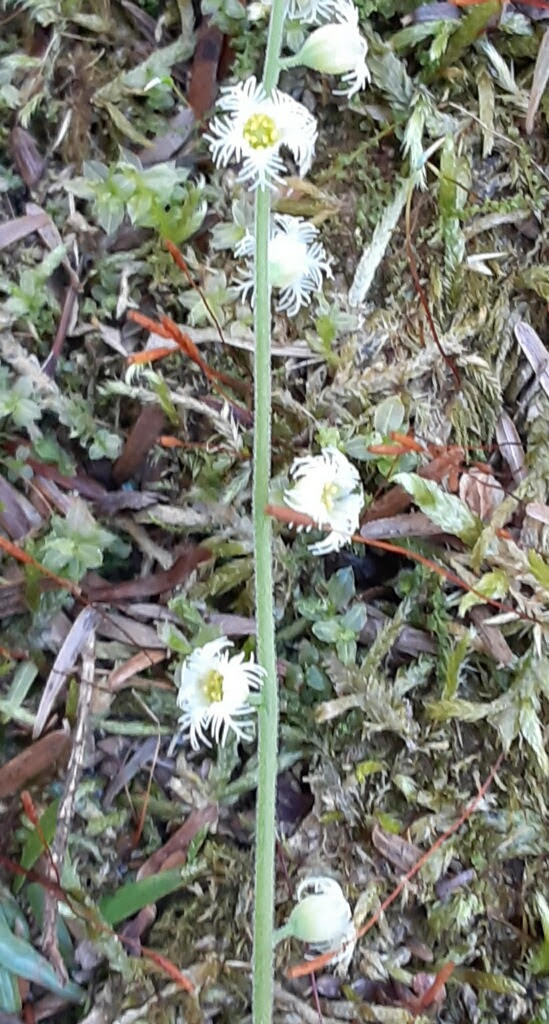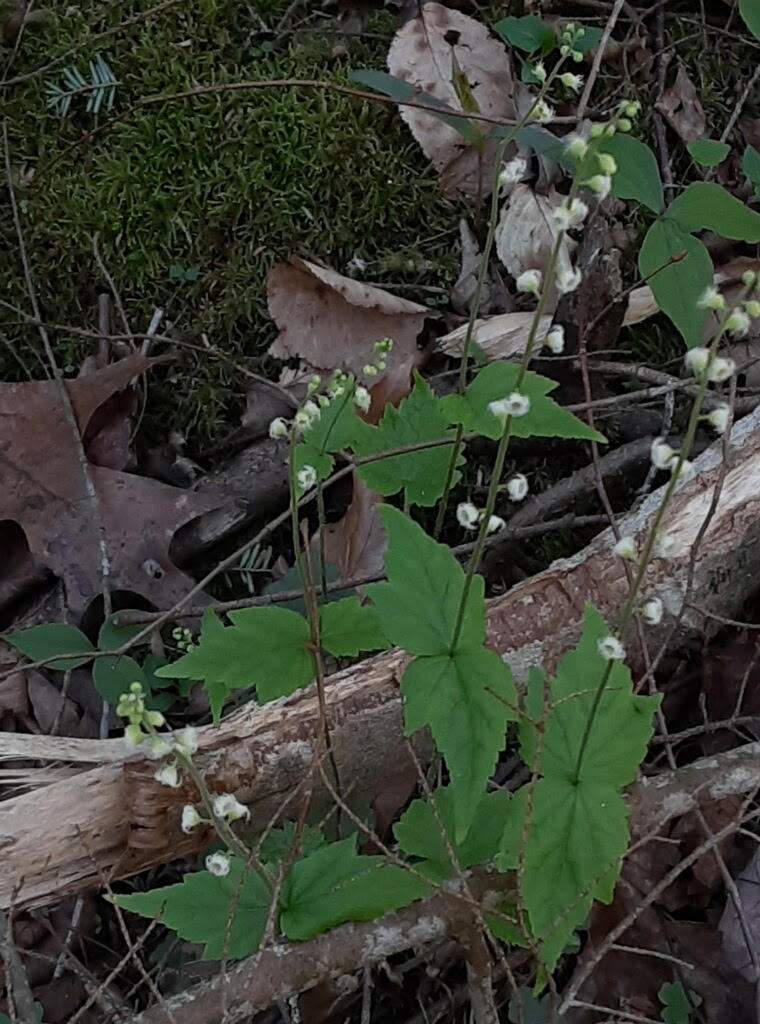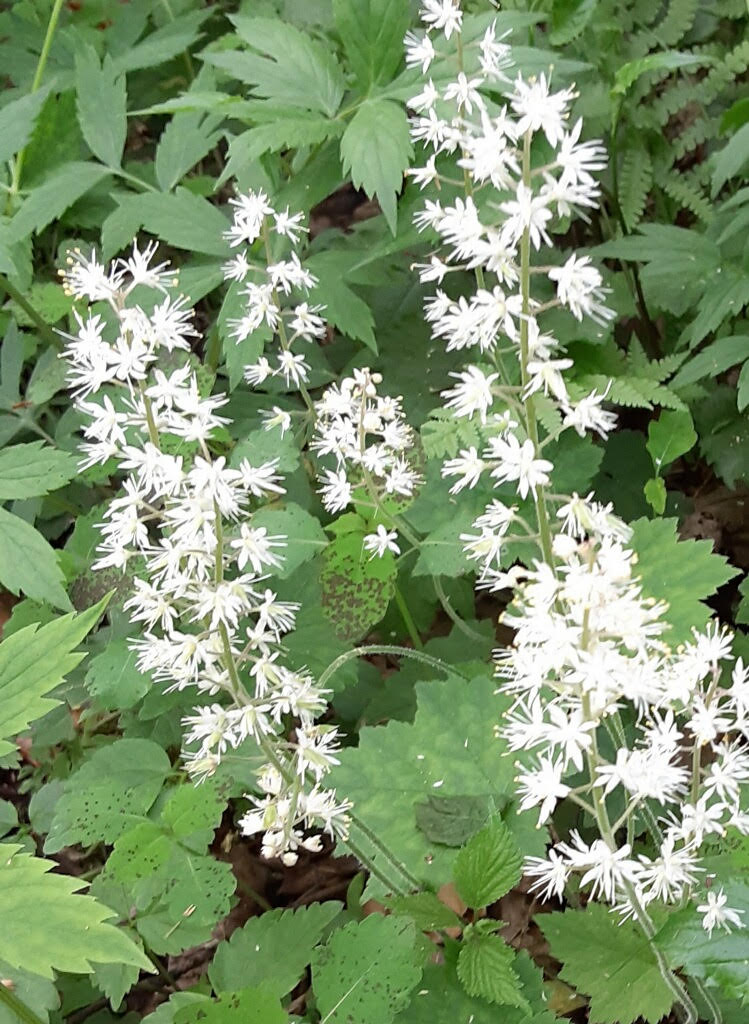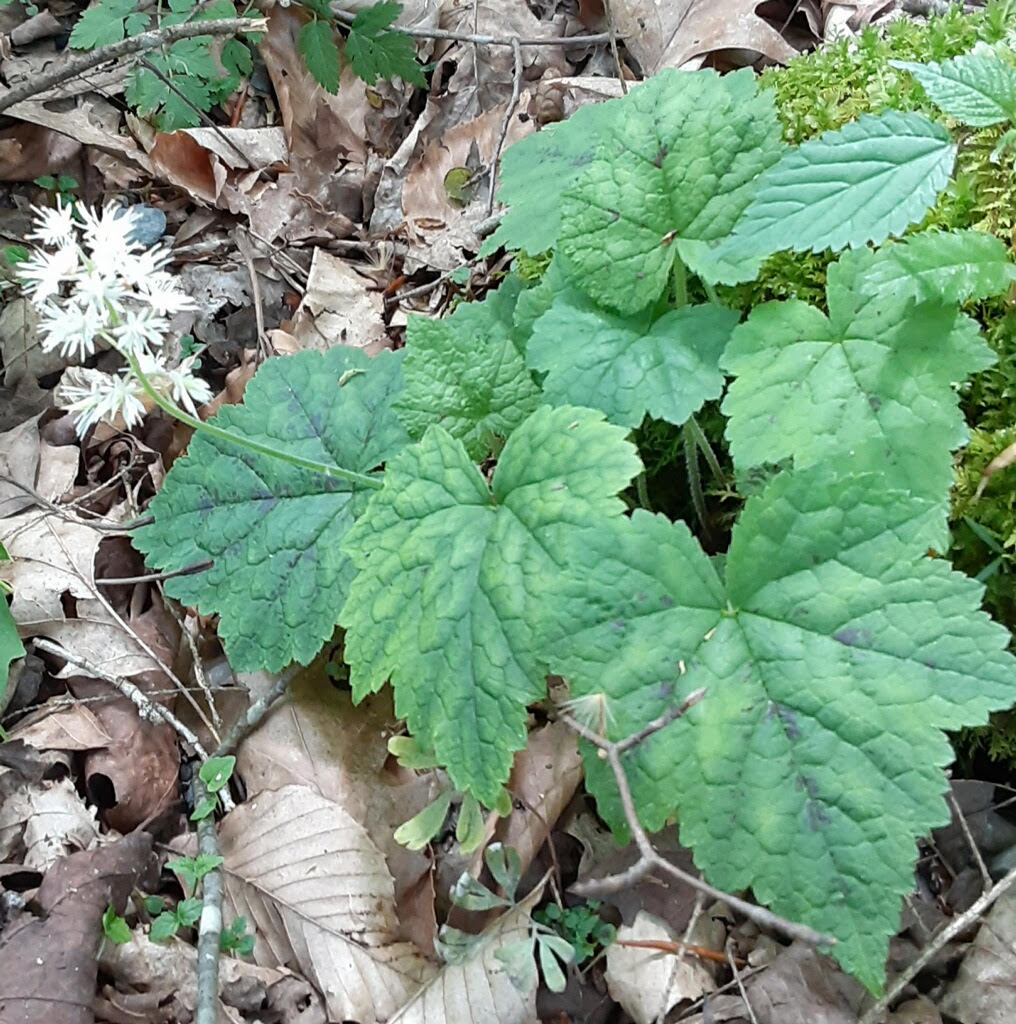By, Susan Sprout
Miterwort (Mitella diphylla) and False Miterwort (Tiarella cardifolia) are spring-blooming, perennial plants native to eastern North America and members of the Saxifrage Family, along with another recent post, Early Saxifrage. You may remember that the family name means “rock-breakers”. Miterwort and False Miterwort are alike in many ways, but different enough to NOT be placed in the same genus. Their similar habit of growing in rich, moist woods in heavy shade allowed me to find them growing together by a small run, in a forested area near the base of a hill. What a treat to find them together!

What catches the eye first when seeing Miterwort, is its smooth upright stem of widely-spaced, cup-shaped flowers that appear to be floating above their maple-shaped green leaves. On closer inspection, you can see how beautiful they are. Each of the five tiny petals are fringed, making them look like white, lacy snowflakes. About half-way down their stems are a small, single pair of opposite leaves, earning them the species name “diphylla” or “two-leaves”. The remainder of leaves are found at the base of the plants. After pollination by small bees and flies, the female organs, or pistils, form two-beaked pods that resemble a bishop’s cap or mitre. As they mature and dry, the pods split open to reveal shiny, black seeds that can be washed loose by raindrops.

False Miterwort, also called Foamflower, has small white or pinkish flowers that grow closer together, forming a narrow cluster that is bunched nearer the top of a leafless stem. The ten stamens, or male organs, of these small flowers extend beyond the edges of the flower petals creating a fine texture like fluffy foam, which accounts for its other common name. The leaves are heart-shaped and hairy. Some tend to have darker pigment or spots near their leaf veins. The flowers have similar pollinators and their paired seed capsules will split open along one side like Miterwort.




